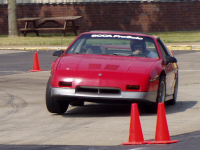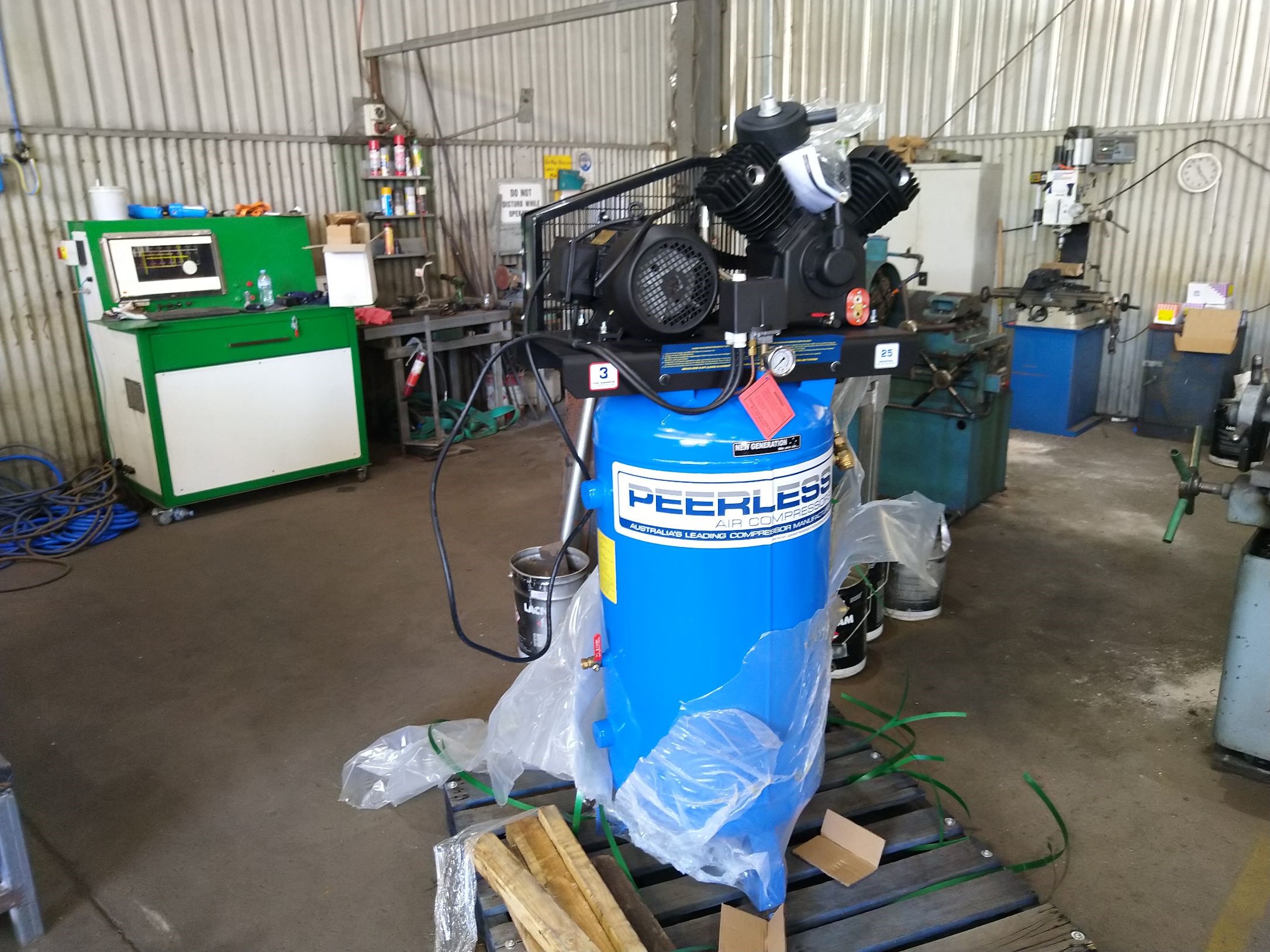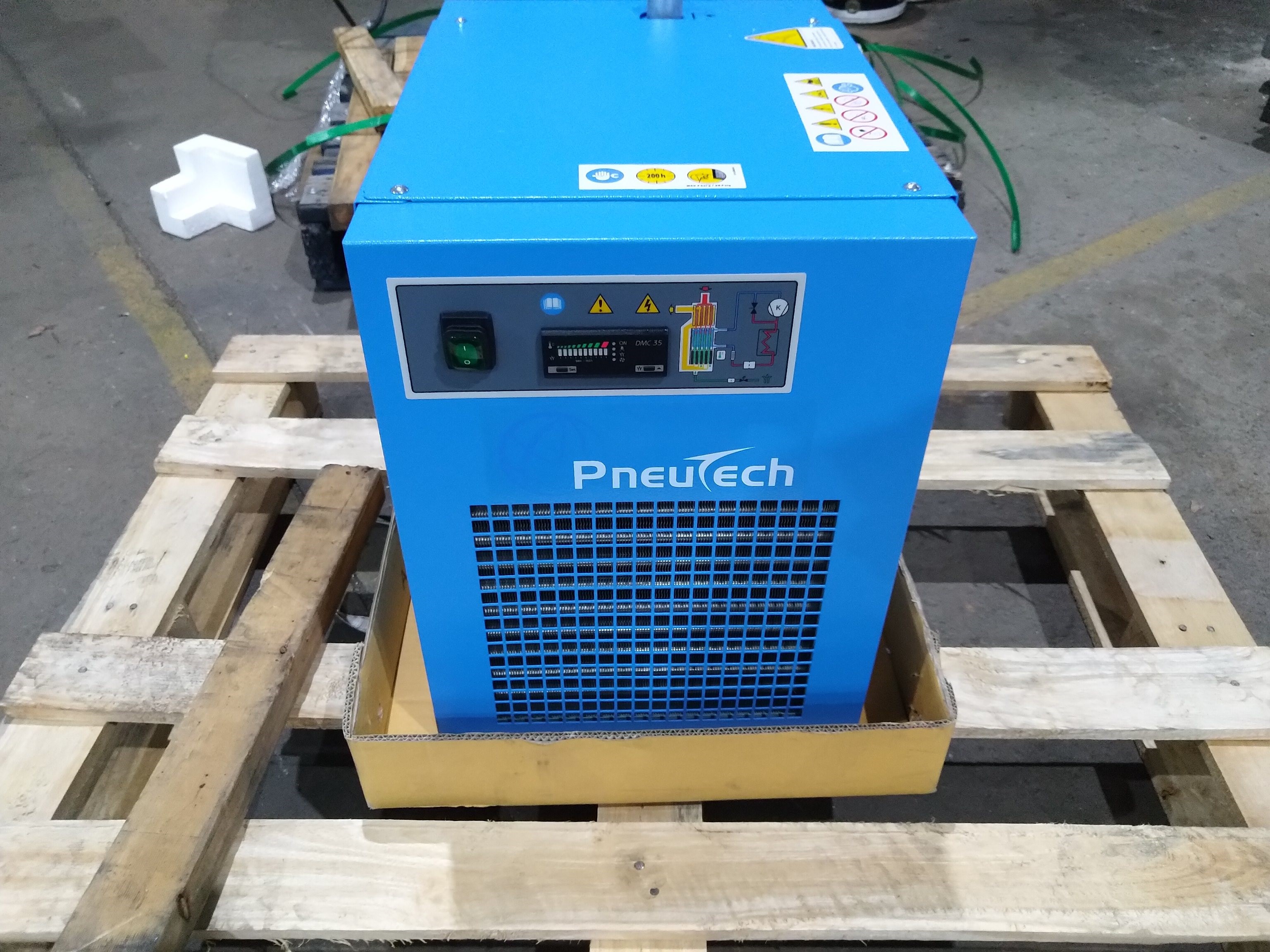Choosing a compressor for plasma cutting
- tommylight
-
 Topic Author
Topic Author
- Online
- Moderator
-

Less
More
- Posts: 21034
- Thank you received: 7163
09 Sep 2020 15:09 - 09 Sep 2020 21:39 #181455
by tommylight
Choosing a compressor for plasma cutting was created by tommylight
Thought of adding this here as more and more users are getting into plasma cutting and this is an important part of that process, and the market for them is becoming a mine field, as i found out yesterday while looking for one.
--The most important information when buying one is the volume they can compress per minute at a given pressure,
-the tank size is not of much importance, but the bigger the better,
-the motor size is and should be as a rough estimate of the capability of the compressor,
-The working pressure for smaller plasma units has to be 5 to 5.5 Bar or 75 to 83 PSI, while bigger industrial ones need at least 7 bar or 105PSI. Anything below or above that might cause miss fires and extinguished arc's .
-Depending on the nozzle used and if the shielding gases are needed, they will go through 180 to 350 litres of air per minute at 5 Bar or 75 PSI.
-always check the volume per minute they can put out, it should be over 250 Litres a minute for small shops that do occasional work and at least 400 for all day work at 8 Bar or 120 PSI.
-Another thing, noticed on youtube that in US they claim the volume for compressors at a very low PSI value, not at the max the compressor can do, and that is useless, and that trend started also here in Europe as i witnessed yesterday.
-the pressure for plasma cutting should always be adjusted while the air is on and going out of the torch, some plasma cutters have a switch just for that, some do not so they need to be triggered and adjusted while the post flow air is on.
-as a rough reference, the compressor should be on for 4 to 6 minutes and off for 10 to 15 minutes for all day work, otherwise the life span of it will be heavily shortened.
-as an example the last one i bought new was made in Italy and could do 420 Litres a minute at 11 Bar, so that was enough for two plasma cutters running all day long, but a 420L/m at 8 Bar can not keep two plasmas running all day. It had a 500 Litre tank, so at 11 Bar it contained 5500 Litres of air inside, while at 8 Bar the same tank would have only 4000 Litres. Keep in mind that since the required pressure for plasma is at least 5 Bar, the 2500 Litres of air left in the 500 litre tank at that pressure can not be used, so the usable capacity at 11 Bar is 3000 Litres that will go out the nozzle in 8 to 15 minutes depending on the nozzle and refill in 7 minutes, while at 8 Bar it is only 1500 Litres that will go out the nozzle in 4 to 7.5 minutes depending on the nozzle and refill in nearly 4 minutes .
--The most important information when buying one is the volume they can compress per minute at a given pressure,
-the tank size is not of much importance, but the bigger the better,
-the motor size is and should be as a rough estimate of the capability of the compressor,
-The working pressure for smaller plasma units has to be 5 to 5.5 Bar or 75 to 83 PSI, while bigger industrial ones need at least 7 bar or 105PSI. Anything below or above that might cause miss fires and extinguished arc's .
-Depending on the nozzle used and if the shielding gases are needed, they will go through 180 to 350 litres of air per minute at 5 Bar or 75 PSI.
-always check the volume per minute they can put out, it should be over 250 Litres a minute for small shops that do occasional work and at least 400 for all day work at 8 Bar or 120 PSI.
-Another thing, noticed on youtube that in US they claim the volume for compressors at a very low PSI value, not at the max the compressor can do, and that is useless, and that trend started also here in Europe as i witnessed yesterday.
-the pressure for plasma cutting should always be adjusted while the air is on and going out of the torch, some plasma cutters have a switch just for that, some do not so they need to be triggered and adjusted while the post flow air is on.
-as a rough reference, the compressor should be on for 4 to 6 minutes and off for 10 to 15 minutes for all day work, otherwise the life span of it will be heavily shortened.
-as an example the last one i bought new was made in Italy and could do 420 Litres a minute at 11 Bar, so that was enough for two plasma cutters running all day long, but a 420L/m at 8 Bar can not keep two plasmas running all day. It had a 500 Litre tank, so at 11 Bar it contained 5500 Litres of air inside, while at 8 Bar the same tank would have only 4000 Litres. Keep in mind that since the required pressure for plasma is at least 5 Bar, the 2500 Litres of air left in the 500 litre tank at that pressure can not be used, so the usable capacity at 11 Bar is 3000 Litres that will go out the nozzle in 8 to 15 minutes depending on the nozzle and refill in 7 minutes, while at 8 Bar it is only 1500 Litres that will go out the nozzle in 4 to 7.5 minutes depending on the nozzle and refill in nearly 4 minutes .
Last edit: 09 Sep 2020 21:39 by tommylight. Reason: more info
The following user(s) said Thank You: thefabricator03, AgentWD40, shpatb
Please Log in or Create an account to join the conversation.
- rodw
-

- Away
- Platinum Member
-

Less
More
- Posts: 11546
- Thank you received: 3871
09 Sep 2020 20:59 - 09 Sep 2020 21:01 #181507
by rodw
Replied by rodw on topic Choosing a compressor for plasma cutting
To add to what Tommy has said, lets look at what the specs for my Thermal Dynamics A120 are:
Operating Pressure: 60-95 psi (4.1-6.5 bar)
Gas Flow: 300-500 SCFH (142-235 Litres per minute).
So what that immediately tells me my air compressor will consume up to 235 lpm
Fortunately here in Australia, compressors must be sold in their Free air delivery (FAD) which is more or less similar to what the quoted gas flow is.
So ignoring the pressure for a moment, the minimum sized compressor I need is 235 lpm FAD and that ignores any losses. But that would be running at 100% of the time while I was cutting. That would never do the job. According to one air compressor manufacturer I spoke to, you really should double that number. So I should have bought a 470 litre FAD machine. But this would have required 3 phase power.I already had the biggest single phase machine I could find which was 320 litres per minute FAD. This only gives me 36% headroom if I am cutting 16-20 mm plate at 120 amps. But most of the time, I'm cutting much thinner stuff so its proved adequate.
If you have insufficient headroom above your requirements, the cycle time will be greater and your air will be hotter. Hotter air will carry more water vapor. Plasma cuttersdon't like hate wet air!.
In a commercial setting (eg sand blasting, powder coating, paint shop) they would normally fit a precooler heat exchanger after the compressor and an auto drain before the air goes into the tank to minimise the amount of water in the stored air and bring the temperature down to ambient. Then as the air exits the storage tank, it will go through a refrigerated drier before it is used. These driers need to reach a minimum dew point temperature to remove all the water. But there is also a maximum range that they can cool the air so if the air is too hot it will not be able to do its job with 100% efficiency. With a precooler, the stored air will be at ambient temperature which should ensure the dew point is hit and the maximum amount of water will be removed from the near frozen air.
With a horizontal or vertical compressor with built in storage tank, this is not normally done. The stored air is therefore hotter so it will be wetter. It is possible to use an automotive transmission cooler between the compressor and the tank. Ideally this cooler should be located so the fan on the compressor pulley draws air through it.
In my climate, before I added a refrigerated drier, the simple dessicant drier I had could not cope and I found water pooled on the floor below a filter regulator. No wonder the torch was not cutting!
So this is yet again why plasma cutting to my mind is not an entry level sport! Its expensive! You need a CNC machine, a decent air compressor and most likely an air drier of some kind before you can cut reliably. In my case the money I saved buying a discounted plasma cutter was quickly consumed when I sorted out the air supply.
Operating Pressure: 60-95 psi (4.1-6.5 bar)
Gas Flow: 300-500 SCFH (142-235 Litres per minute).
So what that immediately tells me my air compressor will consume up to 235 lpm
Fortunately here in Australia, compressors must be sold in their Free air delivery (FAD) which is more or less similar to what the quoted gas flow is.
So ignoring the pressure for a moment, the minimum sized compressor I need is 235 lpm FAD and that ignores any losses. But that would be running at 100% of the time while I was cutting. That would never do the job. According to one air compressor manufacturer I spoke to, you really should double that number. So I should have bought a 470 litre FAD machine. But this would have required 3 phase power.I already had the biggest single phase machine I could find which was 320 litres per minute FAD. This only gives me 36% headroom if I am cutting 16-20 mm plate at 120 amps. But most of the time, I'm cutting much thinner stuff so its proved adequate.
If you have insufficient headroom above your requirements, the cycle time will be greater and your air will be hotter. Hotter air will carry more water vapor. Plasma cutters
In a commercial setting (eg sand blasting, powder coating, paint shop) they would normally fit a precooler heat exchanger after the compressor and an auto drain before the air goes into the tank to minimise the amount of water in the stored air and bring the temperature down to ambient. Then as the air exits the storage tank, it will go through a refrigerated drier before it is used. These driers need to reach a minimum dew point temperature to remove all the water. But there is also a maximum range that they can cool the air so if the air is too hot it will not be able to do its job with 100% efficiency. With a precooler, the stored air will be at ambient temperature which should ensure the dew point is hit and the maximum amount of water will be removed from the near frozen air.
With a horizontal or vertical compressor with built in storage tank, this is not normally done. The stored air is therefore hotter so it will be wetter. It is possible to use an automotive transmission cooler between the compressor and the tank. Ideally this cooler should be located so the fan on the compressor pulley draws air through it.
In my climate, before I added a refrigerated drier, the simple dessicant drier I had could not cope and I found water pooled on the floor below a filter regulator. No wonder the torch was not cutting!
So this is yet again why plasma cutting to my mind is not an entry level sport! Its expensive! You need a CNC machine, a decent air compressor and most likely an air drier of some kind before you can cut reliably. In my case the money I saved buying a discounted plasma cutter was quickly consumed when I sorted out the air supply.
Last edit: 09 Sep 2020 21:01 by rodw.
The following user(s) said Thank You: tommylight, thefabricator03
Please Log in or Create an account to join the conversation.
- thefabricator03
- Offline
- Platinum Member
-

Less
More
- Posts: 1131
- Thank you received: 533
09 Sep 2020 21:19 #181514
by thefabricator03
Replied by thefabricator03 on topic Choosing a compressor for plasma cutting
Attachments:
The following user(s) said Thank You: tommylight, rodw
Please Log in or Create an account to join the conversation.
- tommylight
-
 Topic Author
Topic Author
- Online
- Moderator
-

Less
More
- Posts: 21034
- Thank you received: 7163
09 Sep 2020 21:40 #181517
by tommylight
Replied by tommylight on topic Choosing a compressor for plasma cutting
Those should do nicely ! 
The following user(s) said Thank You: thefabricator03
Please Log in or Create an account to join the conversation.
- thefabricator03
- Offline
- Platinum Member
-

Less
More
- Posts: 1131
- Thank you received: 533
09 Sep 2020 21:43 #181518
by thefabricator03
Replied by thefabricator03 on topic Choosing a compressor for plasma cutting
I have learnt the hard way about how much air plasma uses. Our larger compressor has a very hard time keeping up with running workshop tools and the plasma at the same time. When the plasma is working all day it really cops a flogging!
Please Log in or Create an account to join the conversation.
- Todd Zuercher
-

- Away
- Platinum Member
-

Less
More
- Posts: 4689
- Thank you received: 1433
11 Sep 2020 02:01 #181700
by Todd Zuercher
Replied by Todd Zuercher on topic Choosing a compressor for plasma cutting
Rotary screw compressors are amazing if you truly need lots of air.
Please Log in or Create an account to join the conversation.
- thefabricator03
- Offline
- Platinum Member
-

Less
More
- Posts: 1131
- Thank you received: 533
11 Sep 2020 02:03 #181701
by thefabricator03
Replied by thefabricator03 on topic Choosing a compressor for plasma cutting
Very true. But the up front cost turns people away. When you look at the fact that they produce dryer air and you can get away with a much smaller dryer they start to look better.
Please Log in or Create an account to join the conversation.
- tommylight
-
 Topic Author
Topic Author
- Online
- Moderator
-

Less
More
- Posts: 21034
- Thank you received: 7163
11 Sep 2020 08:21 #181737
by tommylight
Replied by tommylight on topic Choosing a compressor for plasma cutting
Screw compressors are a 2000L/M teritory, make less noise, are on for a minute or two and off for long periods of time, cost a lot and maintenance has to be spot on or the malfunctions will cost a lot.
Please Log in or Create an account to join the conversation.
- Aciera
-

- Offline
- Administrator
-

Less
More
- Posts: 4613
- Thank you received: 2040
11 Sep 2020 13:33 #181760
by Aciera
Replied by Aciera on topic Choosing a compressor for plasma cutting
And they don't like running backwards if you hook them up the wrong way.
Please Log in or Create an account to join the conversation.
- tommylight
-
 Topic Author
Topic Author
- Online
- Moderator
-

Less
More
- Posts: 21034
- Thank you received: 7163
11 Sep 2020 13:36 #181761
by tommylight
Replied by tommylight on topic Choosing a compressor for plasma cutting
None of them do, except the small single phase ones without oil.
Please Log in or Create an account to join the conversation.
Moderators: snowgoer540
Time to create page: 0.179 seconds


